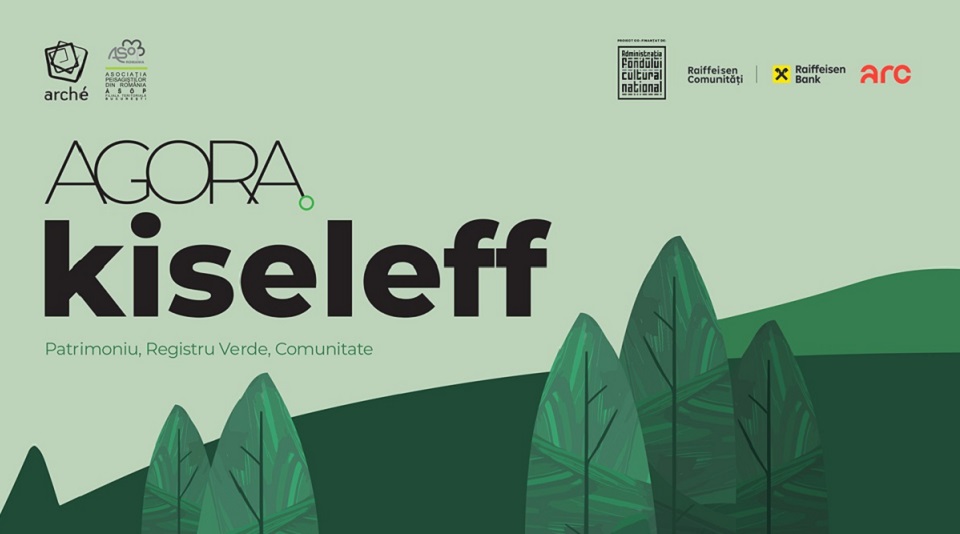The Kiseleff Agora
Kiseleff Park in Bucharest has become a model of good practice in managing historical parks and gardens, thanks to a project called the Kiseleff Agora.

Eugen Cojocariu and Ion Puican, 22.09.2024, 14:00
Kiseleff Park in Bucharest has become a model of good practice in managing historical parks and gardens, thanks to a project called the Kiseleff Agora. At the end of August, the park also hosted a number of cross-disciplinary events.
Kiseleff Park, the first public garden in Bucharest carved out of a forest that used to cover this part of the capital city, was first landscaped in 1832. A road, which today bears the same name, was also created at the time, crossing the park right through the middle. Kiseleff Park was designed by the landscape architect Wilhelm Mayer, who also designed Cismigiu Park in the centre of Bucharest. Today, Kiseleff Park has a surface area of 31,690 square metres and inside the park visitors can see statutes depicting leading cultural figures from Romania and abroad. The park is listed as a historical monument in Bucharest.
The Kisellef Agora project features workshops for the restoration of historical gardens and the management of trees and shrubbery. What is being tested now will allow in the future for the adequate management of green spaces. We talked to the project coordinator, the landscape architect Diana Culescu:
“The Kiseleff Agora is in fact composed of two projects, one of which is the Green Register for Kiseleff Park. The Green Register for Romania, and which seeks to create a model, something Romania should have had since 2007, but is yet to implement. Also, this project merged with another project with a cultural purpose, based on the idea of the Kiseleff Agora. This activity has brought together students, professionals and the public administration to generate this instrument in the Romanian context. It exists at an international level, but it needs to be adapted for this context.”
Diana Culescu tells us what the project has achieved:
“We have carried out a number of activities related to the inventorying of Kiseleff Park and the analysis of all its elements. We often wrongly assume that the green register only refers to trees, when it in fact also refers to park benches, shrubbery, etc., which guides us in these activities about how we can model the app we use so that it is more useful. We had help from three foreign specialists.”
What does the project seek to achieve further? Will it be implemented in other parks in Bucharest and around the country? Diana Culescu again:
“The idea behind the Kiseleff Agora was to bring together people from different areas and we’re already having talks with the participants in this summer school to develop something similar in Aiud and Călărași. So, yes, this is definitely our intention, to take these ideas of original projects further. It’s called the Green Register for Kiseleff. The Green Register for Romania because we want this instrument, which is in fact a legal requirement, to be implemented all over the country.”
Alexandru Mexi, a landscape designer who works at the National Institute for Heritage told us about his involvement in the Kiseleff Agora project:
“I was involved in this project as an organiser and on behalf of the National Institute for Heritage. It’s a very important project because it helps outline new directions in the area of the protection of landscape heritage. This green register is basically a data base that is very important for understanding the dynamics of a park. What are the problems it faces and what does it need? How can these problems be solved? It’s an instrument which, although included in the law since 2008, has only been implemented to a very little degree and often in a flawed manner.”
Who else was involved in the project?
“Experts from abroad, from France, the United States and Hungary who are specialised in the protection of heritage, were also involved in the project.”
Landscape designer Alexandru Mexi also shared his views on Romania’s legislation regarding green spaces and heritage.
“I think the legislation concerning green spaces and the protection of green spaces is somewhat difficult to implement. There were various problems that resulted from the way in which the law was drafted. The law itself is good, but there are some problems in the way it is understood and it contains some instruments that need to be implemented and which should be first and foremost adequately drafted and funded. I think most often the problem lies with the list of specifications for the drafting of green registers. With respect to the heritage legislation, things are a bit better when it comes to the law on the protection of historical monuments, although there’s a lot of room for improvement. As I said before, this green register is an instrument that helps with a better and deeper understanding of heritage assets and which adds to the national registers on fixed cultural assets.”





























